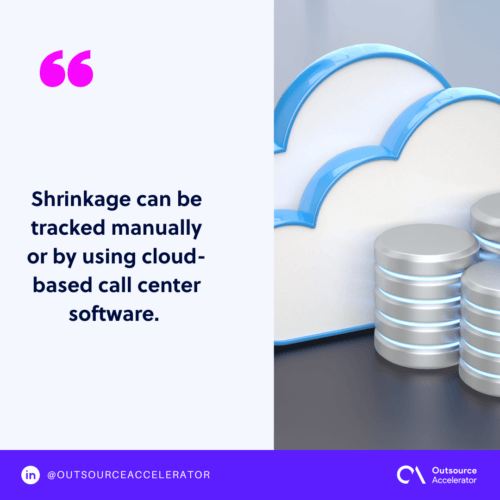What is What is business process outsourcing??
Business Process Outsourcing (BPO) is the delegation of business processes to an external service provider to a nearby or farther location. BPO uses various technology-enabled services to optimize the delivery of services.
Some of the usual outsourced business functions are the following:
Payroll
Accounting
Human resources
Customer service
Sales
MarketingIn the case of content providers, these could mean hiring writers, remote editors, or virtual assistants.
BPO speeds up processes and enhances efficiency. Companies that outsource some of their business processes use their time on core services and competencies.
With this shift in focus, companies improve their current processes, which may result in improved customer satisfaction. BPO helps companies divert their resources to more critical business strategies.
Often, companies find it impractical to hire a full-time position in-house because of the cost associated with doing so. Outsourcing services can also help them save costs and resources in hiring suitable employees.
The definition of business process outsourcing (BPO)In business process outsourcing, a company delegates its services to a service provider. It can be a local firm, nearshore, or offshore company.
Upon reaching an agreement, the service provider will then set up a team for their client. They will shoulder the costs and resources needed, including:
Office space
Workplaces
Connection
Cloud storage
IT infrastructureThe providers are responsible for tracking the staff's performance and progress. Meanwhile, the clients are responsible for providing the tasks, processes, and KPIs needed for their operation.
In some instances, they are also allowed to incorporate their culture and values into their team and absorb them as a part of their company.
What are the benefits of business process outsourcing (BPO)?There are many benefits to outsourcing, as well as some downsides and risks.
Outsourcing powerhouses like the Philippines and India produce high-quality talent at a lower rate due to their low operational costs and full government support.
Since outsourcing companies hire and produce experts in the field, clients can ensure better results in their operations – whether in customer service, accounting, or marketing. Their staff are trained to ensure that their clients achieve the outcome they expect.
Companies are able to scale their staff depending on the demand and availability of their tasks. This also helps them improve their operations by letting their service providers contribute to streamlining their processes.
Outsourcing poses more growth opportunities for businesses of all shapes and sizes. While there are still drawbacks to this practice, it is safe to say that its advantages outweigh its risks.
To explain it further, below we have outlined the top benefits of outsourcing business processes:
Cost savingsCompanies can enjoy savings of up to 70% by leveraging the salaries and costs in offshore countries.
In the Philippines, for instance, companies can hire offshore staff with a US$500/month salary for starting positions. A team of 10 employees would only cost them as much as a single worker in the US with an equal position.
Global marketSmall and medium-sized businesses find it most difficult to hire local employees that suit their roles.
The widened skill gap in developed countries, paired with economic crises, affects their capacity to expand their teams as needed.
Businesses get to access a bigger pool of talent that can fit their requirements. They can have better options in hiring employees since they are not limited to what is available in their home countries.
Global presenceAt the same time, outsourcing opens clients to global trade opportunities. They can establish their global presence and expand more easily to other locations since they already have operations in the area.
Flexible workforceOutsourcing is a great way to establish a remote workforce, especially for companies looking to implement this setup for the first time.
BPO reduces internal local compliance obligations, including providing additional office spaces to employees. Instead, organizations can hold their business operations on a remote setup, most usually having their teams in an office provided by the BPO firm.
Leverage skillCompanies cannot always do everything on their own. Burnout within entrepreneurs and teams is more common than everyone thinks, especially with everyone filling up the tasks beyond their skill sets.
A BPO company enables them to leverage the skills of other specialist companies on more complex tasks such as accounting and IT.
FocusLastly, BPO enables organizations to focus on their core business functions. This is because most of their non-core business operations are done with the help of a reliable service provider.
Business process outsourcing examplesThe BPO industry is vast, generating over $200bn annually and employing millions of people worldwide.
As stated in the Market Analysis Report, the global business process outsourcing market reached over USD 245.9 billion in 2021. Thus, it is foreseen that we will acquire a compound annual growth rate (CAGR) of 9.1% this year from 2022 to 2030.
The proliferation of the global BPO sector is utterly driven by several key factors that organizations take full advantage of:
Improved efficiency and agility
Focus on core competencies
Decreased operational costs
Adapt to the ever-changing business dynamicsIn general, when we speak of outsourcing, it always entails contracting out parts of business processes to an external provider, either domestically or offshore.
BPO can be seen in different forms and contexts, from hiring single staff to getting an offshore team.
Here we have listed some of the examples of business process outsourcing:
Big enterpriseCorporate outsourcing has been around since the industry started. The new breed of large companies are still taking advantage of its benefits and using it to expand their offerings further.
Some of the known enterprises that outsource their services today include the following:
Google. Google has been ramping up its outsourcing efforts since 2016 by delegating development and customer support. Facebook. Meta, particularly Facebook, outsources content moderation to the Philippines as a way to filter toxic content and keep the platform safe for its users. Wells Fargo. Wells Fargo has been outsourcing their operations to the Philippines since 2011. It has recently pulled out its functions in the country, though the company retained its BPO center in Manila. Medium-size businessesA medium business with 50-500 staff might outsource the labor-intensive accounting and finance functions to a team in the Philippines.
Small business and entrepreneurThe recent Clutch survey stated that around 90% of small businesses plan to outsource their services in 2022 due to the efficiency and flexibility that companies get.
It is common for small business owners to have a Virtual Assistant (VA) working for them full-time and remotely from the Philippines.
Aside from this, organizations can delegate other services such as development, IT, and digital marketing.
What are the different types of BPO?Outsourcing can be executed in different forms, depending on the outsourcer's needs. The truth is that not everyone is fully aware and has an in-depth grasp of the BPO sector.
For most people, BPO can simply mean farming out business processes to third parties located in another country, but this is just one type of BPO.
As for businesses, it is always vital to be familiar with the various classifications and functions of BPOs. This way, they are able to opt for a business process outsourcing provider that is best suited for their type of requirements and industry.
More importantly, outsourcing is not a one size fits all strategic approach, this is why it is not enough just know what outsourcing is and how it works.
There are several types of BPOs that businesses can choose from. The type of business process outsourcing can be characterized by its specialization, location, and size.
Generalist or specialist BPOsBusiness process outsourcing is in the human resources and professional services sector.
However, their services extend across all industries. The majority of BPOs are generalists in that they offer a full range of professional services.
Meanwhile, some specialize in certain verticals, such as the following:
Legal process outsourcingLegal process outsourcing deals more with delegating legal processes and compliances to legal firms in another area.
Knowledge process outsourcing
Meanwhile, knowledge process outsourcing enables companies to outsource knowledge-related work, including research and development, innovation, and creativity.
LocationBusiness process outsourcing typically operates from developing nations such as the Philippines, India, and Colombia. They typically have cheaper cost of living and bigger populations. Different locations offer different advantages.
Size of BPOThe bigger BPOs employ more than 250,000 people. They are huge, global operations. Medium-sized BPOs range from 500-5,000 staff and offer a full range of services. The smaller BPOs might have 1-500 people.
OffshoreOffshore outsourcing refers to the process of delegating a part of operations or a department to an offshore country.
To maximize profitability and efficiency, companies choose to outsource to a different region or timezone. India, the Philippines, and South Africa are some of the popular countries known for offshore outsourcing services.
OnshoreOnshore outsourcing or onshoring, meanwhile, is preferred by firms looking to delegate their services within their country.
Onshoring does not offer as much savings as offshoring or nearshoring. However, clients prefer this as a way to maintain their branding and satisfy their local markets.
NearshoreLastly, nearshore outsourcing is preferred by companies that do not want the hassles of time zones and cultural differences in offshoring but still want to get the best out of their delegated services.
Through nearshoring, businesses can collaborate with their teams located in nearby countries. This gives them the opportunity to maintain their local compliance and save on costs since most nearshore locations are cheaper than their onshore counterparts.
Functions of business process outsourcingCollectively, business process outsourcing provides any kind of staffing solution. Common functions of BPO include:
Finance and accountingOutsourced finance and accounting services help businesses manage their books, monitor cash flow, and keep up with corporate income tax compliances without fuss.
HealthcareHealthcare outsourcing, meanwhile, organizes various back- and front-end functions for the healthcare and insurance industries.
Creative and contentCreative services outsourcing covers everything from post-production of Hollywood movies to newspaper and website content.
Tech, IT and developmentIT outsourcing involves delegating network management, web and app development, and cybersecurity protection to IT firms in different countries.
Sales & customer supportSome BPO providers specialize in sales and customer support for pre- and post-sales transactions. This helps companies meet the expectations and demands of their customers, keeping them satisfied even after their purchase.
MarketingBPOs and marketing firms can help in ongoing marketing, communication and branding activities for their clients. This helps them attract more suitable leads in a cost-efficient way.
Talent and HRBusinesses can delegate HR, recruitment, and compliance to professional employer organizations to maximize recruitment and workforce management.
AdministrationGeneralist BPOs help organizations accomplish general business administration and operational activities. This includes data entry, appointment setting, and other related functions.
Supply chain managementLastly, e-commerce stores benefit from outsourcing supply chain management to manage warehouse and delivery processes.
The future of BPO outsourcingWe have gathered five expert opinions from renowned global business leaders. They shared how they perceive the future of outsourcing will be, including the trends that will prevail in the coming years.
Meg Marrs, Safer Senior CareMeg Marrs of Safer Senior Care strongly believes that entrepreneurs and business leaders should outsource their essential tasks.
“Outsourcing certain roles has freed up my time to focus more on big picture strategy, rather than being completely meshed in the day-to-day tasks.”
One thing is certain, outsourcing to support businesses growth is something that will never go out of trend.
Sean Nguyen, Internet AdvisorAs for Sean Nguyen, Director of the Internet Advisor, outsourcing to streamline processes is another essential trend that businesses will continue to apply.
He quotes, “Outsourcing can be really helpful, even at the most incipient levels, because it allows you to streamline operations. If it's not essential to have it taken care of in-house, there is no reason to do so.”
Elandas Miller, Kicking It SportsElandas Miller of Kicking It Sports, has been outsourcing back office and creatives since 2017. “I like to think of outsourcing as a tool to help me get to my goals faster and more efficient without burning myself out.”
Outsourcing to support both organizations' short and long-term goals is another trend that companies will practice in the foreseeable future.
Tom Baker, Tom's ProjectsThe founder of Tom's Projects, Tom Baker, offshores his entire product and development. “Outsourcing means that we can scale the team up and down when need be.” Scaling the workforce through outsourcing is, yet again, among the trends that will remain prevalent.
Bobby Reid, Capitol Tech SolutionsFor Bobby Reid, founder of Capitol Tech Solutions “Outsourcing has helped our business by being able to provide expertise for a service quickly. While these contracts are outsourced, they are incorporated into our company culture when possible, since they are working full time with our firm.”
Lastly, outsourcing to fill in talent gaps and expertise is one of the key trends that more and more organizations will utilize in the coming years.
The future of work is digital, says Outsource Accelerator Founder and CEO Derek Gallimore.
The world has moved on from manufacturing and creating products to providing services. And as we enter the post-pandemic world, he says we are “moving towards a single global economy.”
The concept of work dramatically changed with COVID-19, and things have changed for good. These changes made us realize that technology is available for remote and digital work interfaces.
Once showed an unsteady growth, the global outsourcing market spiked to US$245.9 billion in 2021. The sudden surge of demand brought by the pandemic, along with the worsened talent shortage, has led companies to increase their outsourcing efforts.
In a podcast episode, Derek explained, “There are eight billion people on the planet, and they are now all increasingly connected digitally.
There are [also] four billion people who are highly qualified professionals sitting around the world, and they're not just virtual assistants and basic roles. You can find [people with] PhDs, architects, accountants, or whatever you need for your business.”
To conclude, Derek believes that the global economy and a globally-sourced workforce are the future, and it is not going away.
Leaders all over the world also know that outsourcing is here to stay. Former US President Barack Obama says that jobs that have been outsourced cannot be brought back to the country.
As a result, it is better to retrain and re-skill the workers who have lost their jobs on account of outsourcing.
Obama further suggests that community colleges could provide the necessary skills for a person to be gainfully re-employed in the workforce. He adds that this is a necessity that Americans look forward to in the future.
Looking back doesn't always make people feel good, so it is essential that they retrain for the ‘jobs of the future.'
How to choose a BPO providerOver the years, outsourcing has been the go-to strategic practice for businesses looking to scale their operations effectively.
But just like any other venture, companies should be wary of the possible drawbacks of outsourcing before selecting bpo providers.
Risks of BPO outsourcing Despite its advantages, business process outsourcing done incorrectly leads to outsourcing risks that affect a company in one way or another.
Hidden chargesSome BPO vendors do not totally disclose the total fees they charge and their terms. Clients could experience “bill shock” upon seeing the hidden charges they get.
Compliance issuesCompliance is crucial, especially in handling financial information and dealing with intellectual property. BPOs that violate compliances could risk their clients' reputations and branding.
Problems with securityLastly, BPO vendors with loose security compliance could risk getting their client's data exposed and used for malicious purposes.
Choosing the right business process outsourcing vendorThe key to successful outsourcing lies in choosing a suitable bpo company and working with them along the way. Here are some of the considerations to look for in a BPO vendor:
ExpertiseA BPO vendor's expertise can be shown primarily through their approach to their clients. Even without getting too technical, they can comfortably discuss the initial solutions to provide according to their client's requirements.
CompliancesEspecially when delegating functions involving sensitive information, a bpo company should be up-to-date and compliant with regulations relevant to their services.
Check for ISO, HIPAA, and PCI certifications as much as possible.
Employee satisfactionA good BPO company also places employee satisfaction as its priority. Check on employee reviews online to see how the staff feels about their company.
TechnologyThe tools and equipment a BPO vendor uses largely affect their performance in general. Check to see if they use updated technology at work and how they train their employees to use them.
Top BPO companies in the world's top outsourcing hubsA wide range of business process outsourcing companies in different parts of the world provide the utmost services to their Western and local clients.
Many of them even earned recognition by award-giving bodies due to their performance in both their roles and their level of care for the employees.
Check out the top BPO companies in several outsourcing destinations below.
Top BPO companies in the Philippines Top Indian BPO companies Top South African BPO companies Business Process Outsourcing (BPO) servicesWith the rise of new offshore outsourcing locations, companies can have better options in terms of location and services they can delegate.
However, finding a suitable BPO company can be a daunting task to be done on their own.
It's a good thing advisory services such as Outsource Accelerator are there to help them.
Outsource Accelerator is the most trusted source for independent information & advisory for Business Process Outsourcing (BPO). We have over 5,000 articles, 400+ podcast episodes, and a comprehensive directory with 3,000+ BPOs from different locations.
Outsource Accelerator's offerings make it easier for clients to learn about and engage with business process outsourcing companies worldwide.
Want to learn more about outsourcing? Check out the Inside Outsourcing book as well as the Inside Outsourcing book review today!









 Independent
Independent




